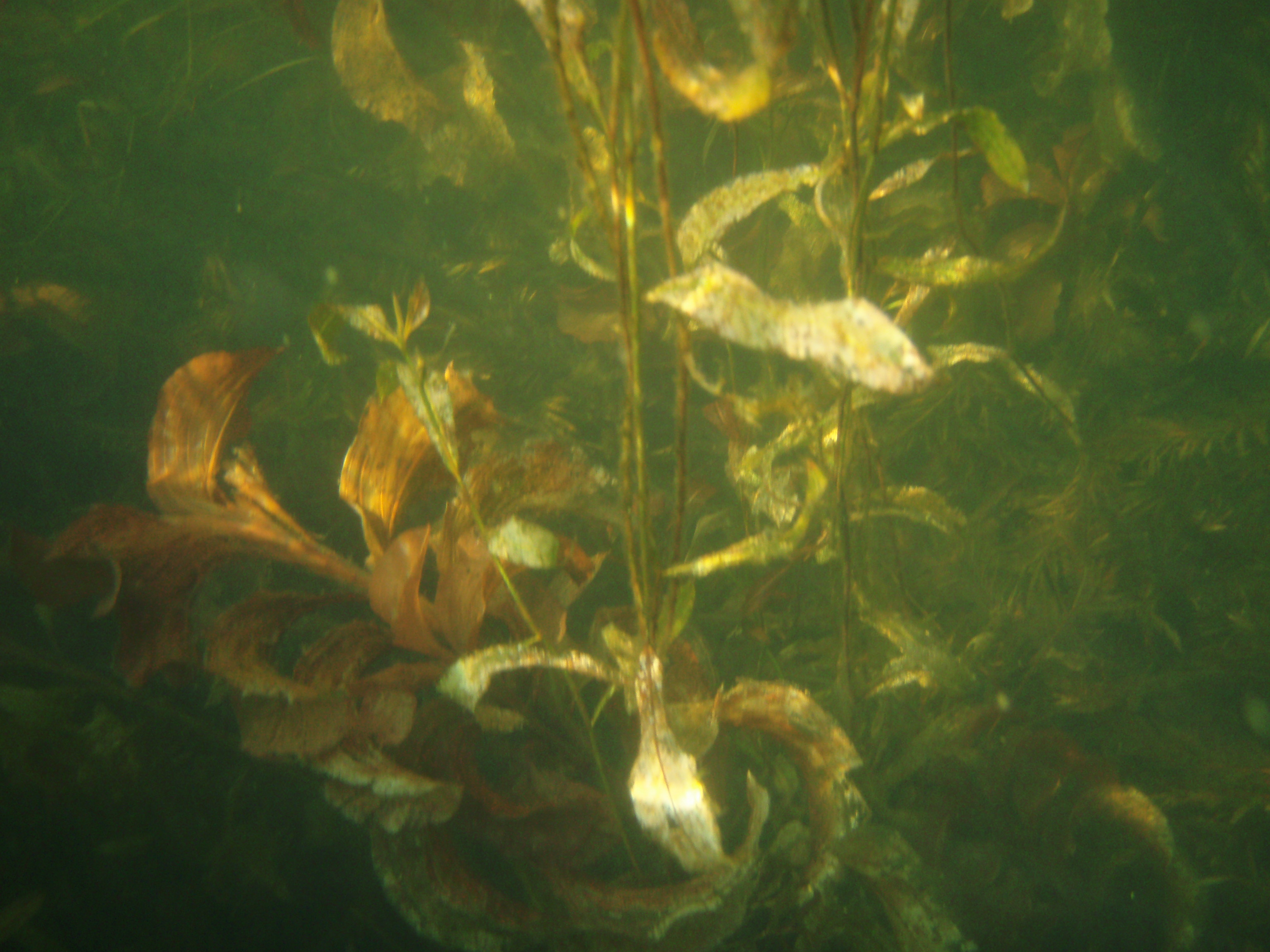
Ecological Importance
Large leaf pondweed provides excellent habitat for pan fish, largemouth bass, muskellunge, and northern pike; bluegills nest near these plants and eat insects and other small animals found on the leaves; walleyes use these pondweeds for cover.
Problems
Dense populations of plants reduce the water temperature and oxygen concentrations when plants die in late summer. Excessive growth of large leaf pondweed can also obstruct boat motors, and can become a nuisance in recreational use of the waters.
Plant Description
Large-leaf Pondweed has the broadest leaf (3.5-7 cm wide) of any pondweed in our region. Submersed leaves are large, oblong, wavy and taper to the steam. Floating leaves are oval-shaped. These leaves are arched and slightly folded. The leaf varies in length and is lined with many parallel leaf veins (25-37). Leaves are alternately arranged on the stem. Solid, tightly packed spike of nutlets at tip rises above the water surface.
Hints to Identify
Large-leaf Pondweed has larger leaves than Illinois Pondweed and has more veins throughout the leaf.
Common Application Questions
Q. When is the best time to treat?
A. Once water temperatures are around sixty degrees or warmer and the plants are viable.
Q. How often do I need to treat Largeleaf Pondweed?
A. Controlled Large leaf will not grow back the same season.
| Homeowner Treatment Options |
| Aquathol K |
| Aquathol Super K |
| Hydrothol® Granular |
| Sonar AS |
| Sonar RTU |
| *Aquatic Biologists recommends implementing preventative management techniques and physical removal prior to, or in conjunction with treatment. |
